Scott #293 is the highest-value issue of the 1898 Trans-Mississippi Exposition series, a commemorative set designed to coincide with the Omaha exposition that celebrated the economic, agricultural, and industrial growth of the American West.
The series consisted of nine denominations ranging from one cent to two dollars, each featuring a theme of western life and development. The two-dollar denomination, titled Mississippi River Bridge, symbolized engineering and transportation progress.
Unlike the lower denominations, which were intended for more frequent use, the two-dollar issue was primarily a high-value stamp meant to cover specific postal requirements. Within the series, it served as the pinnacle denomination, rounding out the set and ensuring coverage for all levels of postal service.
Design & Print
The Bureau of Engraving and Printing, which had been entrusted with exclusive production of U.S. postage stamps since the early 1890s, printed Scott #293 in 1898. The stamp was executed in orange brown ink, a distinctive choice that gave it a clear identity among the other values in the series.
The design features the Eads Bridge, an important engineering achievement spanning the Mississippi River at St. Louis, Missouri. Completed in 1874, the bridge was a marvel of steel construction, symbolizing technological progress and its role in linking eastern and western parts of the country.
Inscriptions include “United States of America” at the top and “Two Dollars” spelled out at the base. As with other high denominations in the series, the production run was considerably smaller than lower values, reflecting limited postal demand for such a high-value stamp. The engraving demonstrated precision and technical depth, capturing the bridge’s structural detail and architectural significance.
Postal Usage
In 1898, the two-dollar denomination was not designed for common letter mail but instead for specialized and large-value postal uses. It was typically applied to parcels, heavy registered items, and business shipments where accumulated postage justified the high face value. International mail requiring significant franking under Universal Postal Union regulations could also demand the use of a two-dollar stamp, especially for bulk or multi-ounce letters.
The denomination also allowed businesses to simplify the franking of large packages by using fewer stamps rather than multiples of lower denominations. Its inclusion in the Trans-Mississippi series reflects the Post Office Department’s intent to offer a complete range of denominations to match all possible postal rates in effect at the time.
Identification
Scott #293 can be identified by its orange brown color and its vignette of the Eads Bridge, a design unique to this denomination within the Trans-Mississippi series. The denomination is spelled out as “Two Dollars” at the bottom of the frame, maintaining the consistent style across the set. Perforation is gauge 12, standard for Bureau issues of the period. The engraving includes finely executed details of the bridge’s steel arches and supporting structure, which specialists use as key points for identification.
When compared with other stamps in the series, Scott #293 stands apart not only because of its high denomination but also because of its subject matter focused on engineering achievement rather than migration, agriculture, or settlement. Its combination of color, design, and denomination ensures clear distinction from other values in the 1898 Trans-Mississippi Exposition Issue.
It’s design was reissued in 1998 commemorating the 100 year anniversary of the Trans-Mississippi stamp set. The 1998 issue can be distinguished by it’s bi-color printing where the vignette is black, versus the 1898 issue was printed in one color.

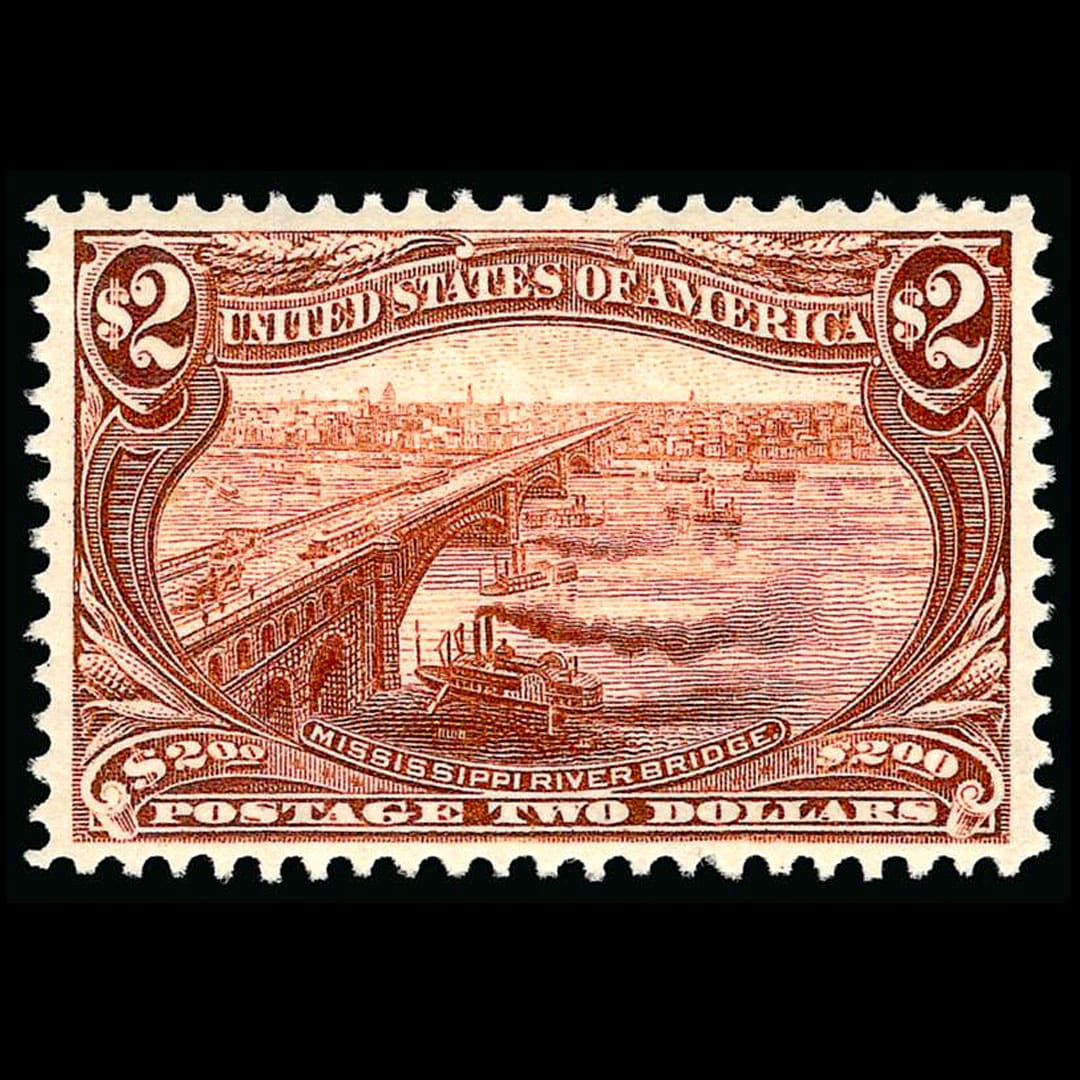


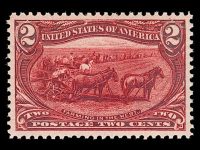
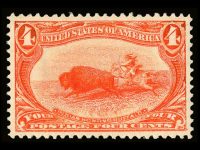
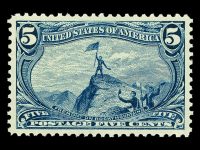
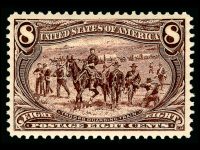

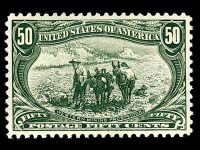
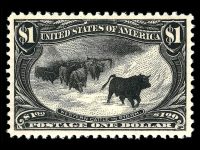













Ask A Question Or Leave A Comment